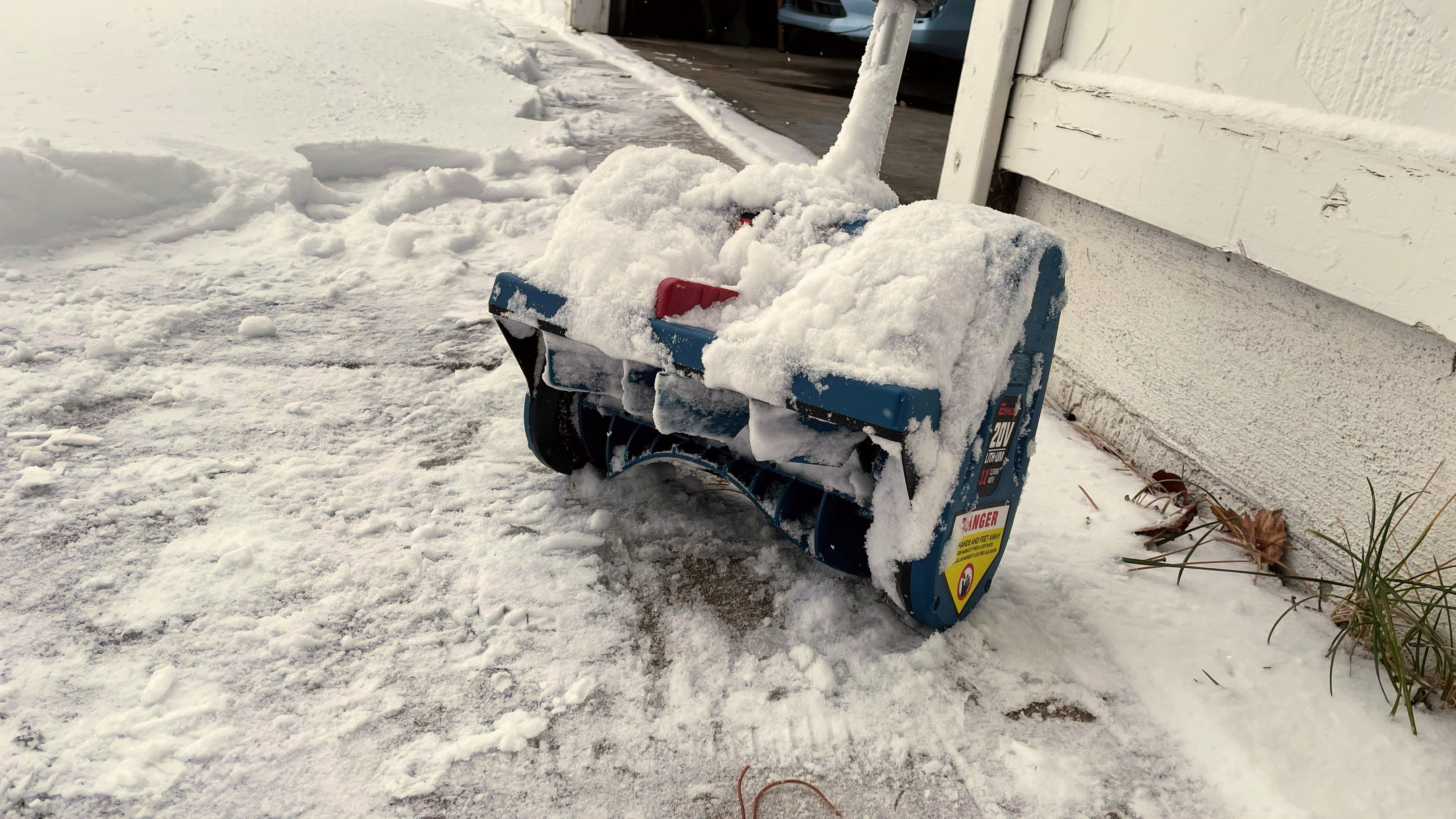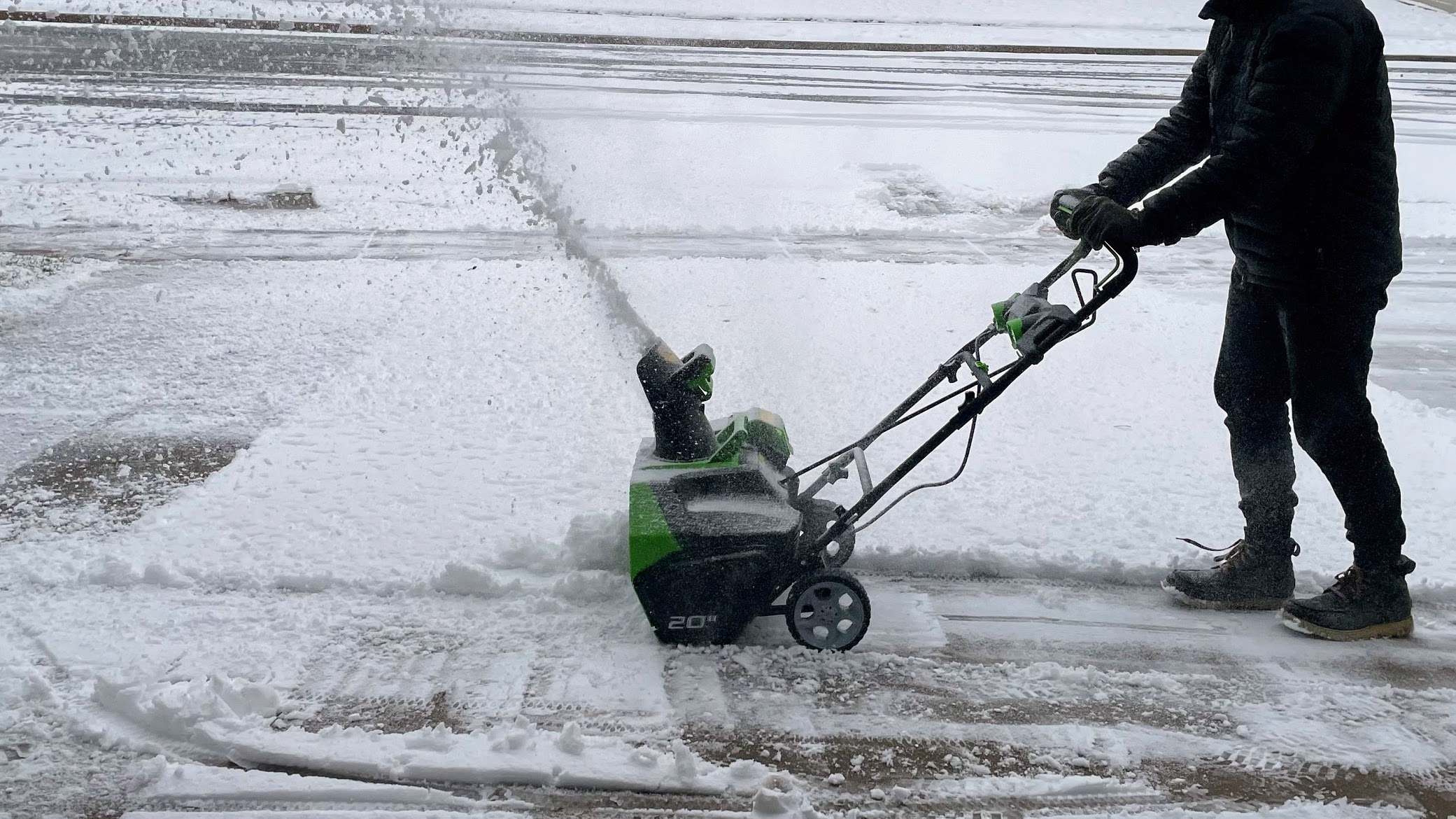Snow blowers vs snow shovels: which is the best choice this winter?
Snow removal, your way

As virtually every character from Game of Thrones once said, “Winter is coming,” Now’s the time to ensure you have the right snow removal tools. Snow removal can be a miserable experience, especially if you don’t have the correct tool for your home’s needs. But when it comes to snow removal, do you need the best snow blower available, or will other snow removal tools, such as a snow shovel, do the trick?
Although snow blowers and snow shovels are part of the same family, their use cases are far different. Depending on your annual snowfall, the area you are clearing, and your physical capabilities, you may fancy one over the other. Oh, and of course, your budget also plays a role.
We want you to have the right tool to handle your snow removal tasks this winter. In this article, we’ll break down the key differences between snow blowers and snow shovels, explain when to use each, and offer expert insights from snow removal professionals to help you make the right choice for your home.
Snow blower vs snow shovel: Price and value
A snow shovel, especially one of the manual variety, is a far more budget-friendly approach to snow removal. We’re talking about hundreds of dollars in savings if you don’t mind spending more on sweat equity.
Typically, you can find a regular old snow shovel for around $30 online or at any hardware store. For a motorized snow shovel, you can find one anywhere between $80 and $300, depending on the brand, components, and battery power. Snow Joe offers one of the more budget-friendly snow shovels, while Toro makes one that is more powerful at 60V compared to 20V, but it's a more expensive snow shovel overall.
Snow blowers, however, provide much more value in reducing manual effort to remove snow. But you’ll undoubtedly be paying for the convenience. On the more affordable side of snow blowers, you’ll be shelling out about $200 or so for a single-stage snow blower. These snow blowers are usually battery-powered in this price range and don’t offer many amenities beyond throwing snow. Many of the components are plastic as well.
Once you start to climb up the ladder with more and better features, like metal augers and automatic chute adjusters, and on up to two-stage snow blower power, you’ll be spending more closely in the $800 to $1,500 price range. While that is a monumental leap from snow shovels, your arms, legs, and back will think it's worth it.
Sign up to receive the latest news, reviews, buying guides and deals direct to your inbox
Snow blower vs snow shovel: Features and functions
Snow blowers are powered snow removal machines and are a fantastic option for efficient, non-strenuous snow removal. They come in three main types: single-stage, two-stage, and three-stage (although three-stage snow blowers are often used more for commercial use). Each type is designed to handle different amounts of snow. Snow blowers are available in both gas and battery-powered varieties.
Here’s a quick breakdown of each type of snow blower:
Single-Stage Snow Blowers: These models have a single auger that scoops up and throws snow in a single motion. These are ideal for areas with light snowfall and are fantastic for removing snow that maxes out at six inches deep.
Two-Stage Snow Blowers: Two-stage models use a drill to gather the snow and an impeller to help blow the snow out of the chute. This helps throw snow farther than a single-stage blower. Two-stage snow blowers can handle deeper and heavier snow (up to 12 inches) better than single-stage blowers. Many of these are self-propelled, which helps make light work of heavy snow removal.
Three-Stage Snow Blowers: Three-stage snow blowers have an accelerator, auger, and impeller. This allows them to handle ultra-heavy snow and even break up ice-packed snow. They can even pick up and toss up to 21 inches of snow (almost two feet!). They are generally designed for commercial use or homeowners in regions with heavy snow.

Now, let’s discuss snow shovels for a little bit. There are different types of snow shovels. There are snow shovels that you use to scoop and lift snow manually, and there are also snow shovels that come in the powered variety.
A snow shovel like the Enhulk 20v Powered Snow Shovel has a motor and auger that scoops snow and throws it as you push it along the ground. It’s about the same size as a traditional snow shovel, but no manual lifting is necessary. Typically, powered snow shovels are battery-powered, making them more convenient for quickly getting them out of the garage, removing light snow, and storing them like a traditional snow shovel.
Finally, we have the old trusty hand-powered snow shovel. A non-powered or traditional snow shovel is the most straightforward tool for snow removal. They come in various shapes and sizes, but they all operate on the same principle—snow removal, which comes at the cost of sweat equity.
Traditional snow shovels are typically lightweight, affordable, and easy to store. No gas powering or battery charging is necessary. It’s ready whenever you are and about as dependable as tools come. Because of this, every homeowner should have a snow shovel in their arsenal if their region gets snowfall throughout the year.

Mathieson has great insight and knowledge of power tools from the Stanley Black & Decker family of brands.
Snow blower vs snow shovel: Performance
Snow blowers will often be the most efficient and least strenuous way to remove snow. Toby Mathieson, Director of Product Management for Stanley Black and Decker, explained the key differences between snow blowers and their removal capabilities.
“The more stages, the more snow the machine can handle," he said. "Single-stage snow blowers are ideal for up to 6 inches of snowfall; two-stage snow blowers are great for up to 12 inches of snowfall; and three-stage snow blowers can easily handle 21-23 inches of snowfall, depending on the model."
Mathieson also mentioned that it depends on the property type you are clearing: “Single-stage snow blowers are ideal for smaller jobs like walkways and short driveways. They are light, compact, and easy to handle. But if you get more snow, have unpaved surfaces with inclines, or a longer driveway, you’ll want to consider a two-stage or three-stage snow blower to help clear larger volumes in larger areas."

Yaeir Moinzadeh is an MHIC-licensed contractor and owner of Blue Rise Baltimore Roofing. He’s been in the construction business for several years and, being in the Baltimore area, has to do a fair share of snow removal on many properties he works at.
Powered snow shovels, on the other hand, are less powerful than even lightweight, single-stage snow blowers. But that’s not a bad thing, either.
According to Yaeir Moinzadeh, an MHIC-licensed contractor and owner of Blue Rise Baltimore Roofing, "If the area is not too big or has light snow, then a snow shovel will suffice. But also consider that if you use a shovel, it will almost always take longer.
"On average, a two-stage snow blower can clear at a rate of nine square feet per second compared to only square feet per second with a shovel,” she added.

Snow blower vs snow shovel: Also consider
Now that you have the lowdown on each snow removal tool and its snow removal capabilities, there are a few other things you should consider before determining which tool is best for your needs.
Snowfall Amount and Frequency
Your local weather plays a huge role in determining whether to buy a snow blower or a snow shovel. If you only get a few inches of snow a year or your snow storms only drop two to six inches at a time, a traditional or powered snow shovel is a great option. On the contrary, a snow blower is essential for areas with regular heavy snowfall.
Reviews
Whirlpool 24" Stainless Steel AI Dishwasher Review
Napoleon TravelQ PRO285 Portable Gas Grill review
Dreame L40 Ultra Robot Vacuum Cleaner and Mop review: almost hands-free cleaning
GE Profile Smart Mixer with Auto Sense review: a powerful, thorough mixer
Echo eForce DPB-2500 review: a leaf blower as a snow removal tool?
DPAS-2100 + Pro Paddle Attachment review: a new way to remove snow this winter?
Midea MAD53109APK 5.5QT Air Fryer review: a small, simple, and highly effective option
Eureka J15 Pro Ultra Robot Vacuum review: hands-free cleaning for busy families
The Size of Your Property
A shovel is the best choice for small areas and light snow. Snow shovels are great for walkways, sidewalks, decks, patios, and stairs. For larger driveways, two- and three-car driveways, and heavy snowfalls, you’ll want a powered snow blower that can toss the snow for you.
Physical Ability
This applies to both snow shovels and snow blowers. Bigger two- and three-stage snow blowers, even with a self-propelling mechanism, are still heavy to maneuver around. Traditional snow shovels also require a lot of physical effort to remove snow. If you have any physical limitations, investing in a powered shovel or a lightweight, single-stage snow blower will make snow removal a less physically stressful task.
Budget
If saving money is the name of your game, a traditional snow shovel is the way to go. You can pick one up for about $30 at your local hardware store. That being said, some battery-powered snow shovels and even single-stage snow blowers won’t cost you more than $200, which is decently priced when considering how much physical labor these tools can reduce.

Snow blower vs snow shovel: which is better?
When you consider everything, it depends! Your individual needs, location, and the size of the area you are clearing should help you determine correctly.
Our expert, Mathieson, summed it up perfectly: “If you don’t get much annual snowfall, have a smaller area for snow removal, and are physically able, you likely don’t need much more than a snow shovel. If this doesn’t sound like your situation, you should find a snow blower that fits you.
"However, even with a snow blower, it’s a good idea to have a snow shovel to remove snow from tighter spaces.”

With a Bachelor's Degree in Communications and Media from Weber State University, Jonathan Knoder is all about Smart Home and AV tech. He currently works as a Content Manager for AvantGuard Monitoring Centers in Utah. Jonathan has written extensively and at great length about yard care and snow blowers for Top Ten Reviews, and this is his subject area.
